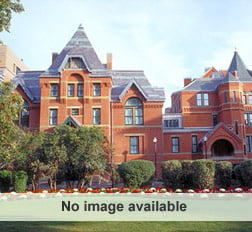School Stats
- Resident Tuition $36,660
- Non - Resident Tuition $48,900
- Application Fee $105
- AVG PCAT N/A
- AVG GPA 3.6
Crime: Detailed Stats >
Admissions Information
- Admissions Office
- 9500 Gilman Drive MC#0657
- La Jolla, CA 92093
- United States
- Phone: (858) 822-4900
- Fax: (858) 822-5591
- Email: [email protected]
- Website: www.pharmacy.ucsd.edu/
School Overview
University of California San Diego Skaggs School of Pharmacy and Pharmaceutical Sciences Fast Facts
School Info
The purpose of the Doctor of Pharmacy curriculum is to prepare students to be leaders in the profession of pharmacy and to provide them with the tools to effectively practice in a wide variety of currently existing and potential future roles in hospitals and medical centers, community pharmacy settings, academia, government and the pharmaceutical industry. It is expected that the emerging fields of pharmacogenomics and bioinformatics will have a profound influence on the future practice of pharmacy. Graduates of the UCSD School of Pharmacy are in an excellent position to bring these advances to the patient care setting.
Curriculum
The Doctor of Pharmacy Curriculum at the UCSD Skaggs School of Pharmacy and Pharmaceutical Sciences is designed to prepare graduates for a challenging career in Pharmacy over an anticipated professional career spanning 30 to 40 years. The curriculum prepares students to be leaders in the profession of pharmacy and provides the tools to effectively practice in a variety of existing and potential roles in academia, hospitals and clinics, long-term facilities, home care, government, health policy, the pharmaceutical industry and innovative community practice settings. The emerging fields of pharmacogenomics and bioinformatics will have a profound influence on the future practice of pharmacy and graduates will be in an excellent position to bring these advances to the patient care setting. Essential to the ability to self-educate oneself as the profession undergoes tremendous change in the future is a strong understanding of the basic biomedical and pharmaceutical sciences. The curriculum is designed with the basic philosophy that all health science students, both medical and pharmacy, require a common base in the biomedical sciences. To this end, pharmacy students take courses in the basic biomedical sciences with the medical students in the second and third years of the curriculum. In addition, pharmacy students will be enrolled with these same medical students during advanced practice clinical experiences in the fourth year. The common required and elective coursework taken by pharmacy and medical students and advanced practice clinical experiences where medical and pharmacy students work closely together have been created to foster the development of cooperation between the professions as well as to develop an appreciation for the unique roles that each professional provides in the care of patients. For more information please go here: http://pharmacy.ucsd.edu/prospective/curriculum.shtml.
Facilities
The building consists of four floors plus a basement. The ground level is home to five lecture-style classrooms, two of which seat 60 students each, and all of which are equipped with state of the art AV. In addition, one classroom features 3D projection capability, student-run and operated podcasting (exclusively for classroom use), and a capacity for teleconferencing. The ground level is also home to a clinical simulation lab with four point-of-care patient rooms, along with meeting spaces and administrative offices. The second, third and fourth floors contain laboratories, meeting spaces and faculty and staff offices, the layout of each being a mirror image of the others. The different types of research laboratories are distributed throughout the three research floors to promote the interaction of the research scientists. Upon entrance to the third floor, one becomes quickly aware that something unique exists here: the Protein Data Bank (PDB), administered by the nonprofit Research Collaboratory for Structural Bioinformatics. The PDB provides an essential library of protein and nucleic acid structures and supports research worldwide. The building's basement houses the Health Sciences Education Center, a portion of which was funded by the Skaggs family. It consists of a 260-seat auditorium with state of the art AV; three break-out rooms, each of which seats 50; and a lovely lobby and patio area. In addition to the Health Sciences Education Center, the basement also contains laboratory space which houses a NMR magnetic facility, a proteomics laboratory and a mass spec laboratory. All three laboratories are used not only by the School of Pharmacy's researchers, but also by researchers from across the UC San Diego campus and from the Scripps Institute of Oceanography.


What are your suggestions for the admissions office?